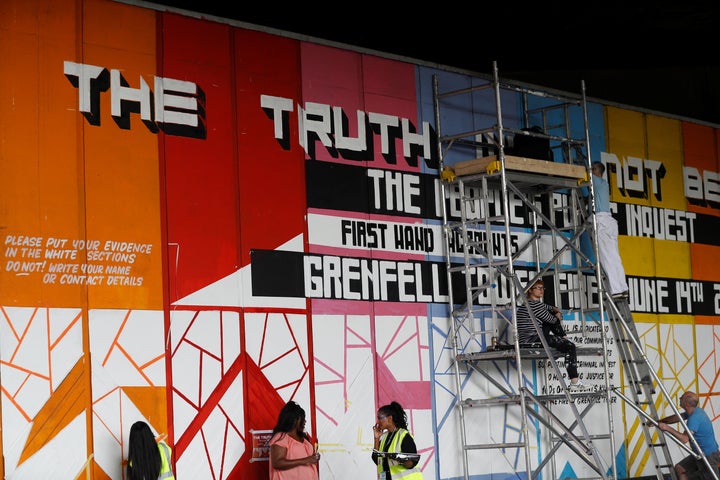Seventy-five samples of cladding used on tower blocks in the United Kingdom and sent for testing following the Grenfell Tower tragedy have failed fire safety tests, the British Department for Communities and Local Government confirmed on Monday.
The samples from 75 buildings were the first of more than 600 to be tested following the deadly fire in London’s Kensington neighborhood 12 days ago. The fact that all of the samples failed the test is sure to raise new questions for regulators and authorities who allowed the use of the high-risk material on buildings across the country.
The samples were taken in 26 local authority areas across England, including several London boroughs and neighborhoods in Manchester, Plymouth and Portsmouth.
“The fact that all samples so far have failed the test underlines the value of the testing program and the vital importance of submitting samples urgently,” Communities and Local Government Secretary Sajid Javid told the House of Commons on Monday.

Grenfell Tower, a 24-story housing block in London’s Kensington neighborhood, went up in flames early in the morning on June 14. The blaze claimed the lives of at least 79 people, although the death toll is still expected to rise.
Analysts say the fire started when a fridge in an apartment on the fourth floor exploded. The fire rapidly spread through the outside of the building as panel after panel of the aluminum cladding covering the building caught flames.
Since the role of the cladding in the intensity of the blaze has become clear, regulators and local authorities have faced intense pressure for their failure to restrict that type of material on high-rises and their decisions to use it in building projects across the country.
Grenfell Tower underwent a massive renovation just last year that residents were told was to improve fire safety in the building. But the renovations didn’t include the installation of an automatic sprinkler system. The management organization also opted for the installation of aluminum cladding made with pure polyethylene, which is banned on tall buildings in the United States and other European countries because of its reputation as a fire hazard. The board of the management organization includes representatives of the local government.
Arconic, the company that produced part of the cladding on Grenfell Tower, on Monday banned its material from being sold for use in high-rises, citing the divergence in building codes around the world, The Guardian reported. Arconic made the panels, but not the insulation, used on the London tower block. British authorities have not yet explained whether the samples from other apartment buildings that failed the recent fire hazard tests also used the company’s materials.

Following the Grenfell Tower fire, local authorities across the U.K. have scrambled to identify other buildings that potentially have the same risk. Communities Secretary Sajid Javid has urged local authorities and housing associations to continue to submit samples for testing.
On Friday night, thousands of people living in 650 apartments in North London were forced to evacuate from their buildings over safety fears. The residents face weeks in temporary accommodations, HuffPost UK reports.
This article has been updated to reflect that more samples failed testing and to note changes in Arconic’s use of materials.
